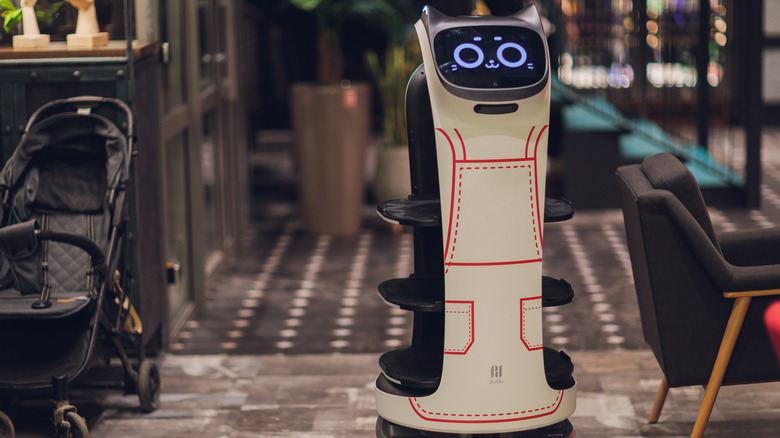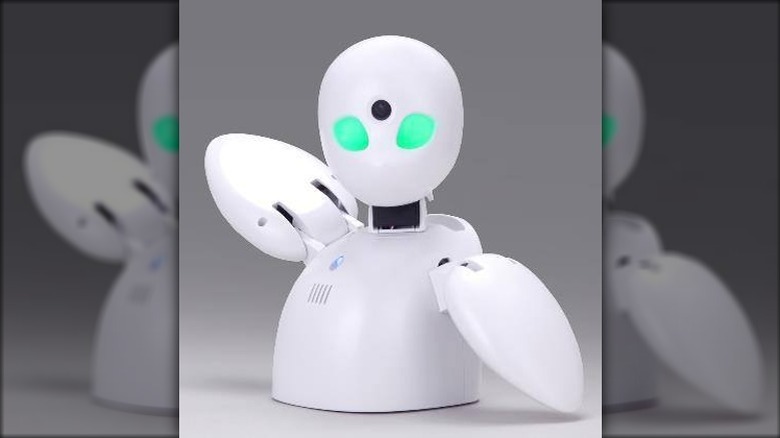Fast Food Restaurants In Japan Look Like Something From The Future
If you're at a restaurant dining on a pretty mediocre-tasting meal and a friendly robot waiter is involved, chances are that this unique experience might lead you to write a decent review anyways. It's not every day you get to feel like you're living in a world full of futuristic tech like something straight out of "The Jetsons." It's no secret that Japan is one of the top leaders in robotics and automation, supplying the world with 45% of its total robots. During the height of the pandemic in 2020, that number skyrocketed to 78% when worker shortages around the globe were at an all-time high. The country's food industry introduced even more helpful robots during this time in many restaurants in an effort to keep productivity and quality levels high.
Some robots can make fried chicken, so it's obvious that there's lots of potential for robots to perform more easily automated tasks in fast food. Delivery robots are a hit in Japan, partly because they're so darn cute. From pointy-eared cat robots to courteous robo-waitstaff that are polite and speedy with your order, delivering meals to tables is easy for their programming to tackle. The Tokyo startup, TechMagic, even developed a pasta-making machine, and has created loads of chicken-frying machines that are being rolled out to KFC and Japanese fast food chains. Remotely operated robots are even making it possible for those who physically can't come to work to continue working from home.
Japan's MOS Burger uses a small, remote controlled robot named OriHime
As automated machines replace the need for human employees, some companies like Japan's famous burger chain, MOS Burger, actually use robots to give people work instead. OriHime was introduced during the pandemic, with his huge flashing eyes and penguin-like arms, which help him emote and communicate with customers. The order-taking robot helped many workers keep a steady income source even if they were quarantined or sick, allowing them to remotely operate OriHime, even with just a smartphone.
States with the most fast food restaurants, such as California, are also starting to use automated systems for repetitive tasks. A burger-flipping "robotic kitchen assistant", cleverly named Flippy, was first debuted at Pasadena's CaliBurger in 2017, and is now being used by similar burger joints for its food industry-tailored AI programming. Kaito diners are even getting tech upgrades too, which have used conveyor belts since the 50s to scoot food around the room. Within the past decade, this process has become even more streamlined. Kitchens are able to receive customer orders via tablets and deliver plated food directly to specific tables.
Japan's list of futuristic restaurant tech goes on and on. But besides the growing number of food-related robots there, the country is utilizing all kinds of other advanced dining concepts. For instance, at some eateries, you can deposit your phone into a sanitization station right at your table. It will be interesting to see what other innovative tech-based ideas will pop up in the food industry next.

